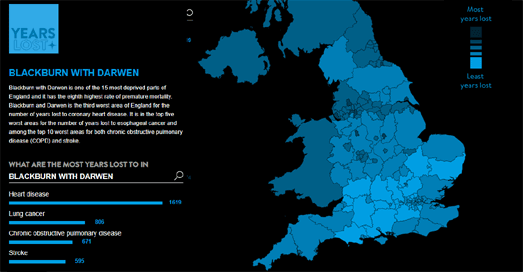Сообщения
Сообщения за октябрь, 2018
Halloween Monsters & Ghostly Haunts
- Получить ссылку
- X
- Электронная почта
- Другие приложения
Global Warming of the Seas
- Получить ссылку
- X
- Электронная почта
- Другие приложения
Time Travel in Venice
- Получить ссылку
- X
- Электронная почта
- Другие приложения
Where Not to Cycle in San Francisco
- Получить ссылку
- X
- Электронная почта
- Другие приложения
The Red Dead Redemption 2 Interactive Map
- Получить ссылку
- X
- Электронная почта
- Другие приложения
Vintage Maps in 3D
- Получить ссылку
- X
- Электронная почта
- Другие приложения
The World's Worst Air Pollution Hotspots
- Получить ссылку
- X
- Электронная почта
- Другие приложения
Counter Surveillance of the Police
- Получить ссылку
- X
- Электронная почта
- Другие приложения
The Map of Ancient Trees
- Получить ссылку
- X
- Электронная почта
- Другие приложения
Mapping the Zip Code
- Получить ссылку
- X
- Электронная почта
- Другие приложения
Mapping Midterm Political Donations
- Получить ссылку
- X
- Электронная почта
- Другие приложения
The World's Most Powerful Company
- Получить ссылку
- X
- Электронная почта
- Другие приложения
Mapping Health Inequality
- Получить ссылку
- X
- Электронная почта
- Другие приложения
Native American Archaeology
- Получить ссылку
- X
- Электронная почта
- Другие приложения
Global Population Pyramids
- Получить ссылку
- X
- Электронная почта
- Другие приложения
Street View of Hawaii's Sunken Island
- Получить ссылку
- X
- Электронная почта
- Другие приложения
Mapping International Trade
- Получить ссылку
- X
- Электронная почта
- Другие приложения
Mapping Where Your Food is Grown
- Получить ссылку
- X
- Электронная почта
- Другие приложения
Satellite Evidence of China's Re-education Camps
- Получить ссылку
- X
- Электронная почта
- Другие приложения
How to Create Locator Maps
- Получить ссылку
- X
- Электронная почта
- Другие приложения
Locking Them Up
- Получить ссылку
- X
- Электронная почта
- Другие приложения
The TARDIS Constellation
- Получить ссылку
- X
- Электронная почта
- Другие приложения
Planning for Nuclear Armageddon
- Получить ссылку
- X
- Электронная почта
- Другие приложения
The Lynching Dot Map
- Получить ссылку
- X
- Электронная почта
- Другие приложения
Mapping Ukraine's Displaced People
- Получить ссылку
- X
- Электронная почта
- Другие приложения
The China Strike Map
- Получить ссылку
- X
- Электронная почта
- Другие приложения
Mapping Latino Voters
- Получить ссылку
- X
- Электронная почта
- Другие приложения
Shipwrecks of the First World War
- Получить ссылку
- X
- Электронная почта
- Другие приложения
Americans don't know their Alsace from their Bilboa
- Получить ссылку
- X
- Электронная почта
- Другие приложения
New York's Fast Food Hot Spots
- Получить ссылку
- X
- Электронная почта
- Другие приложения
Flying Over Trump's Wall
- Получить ссылку
- X
- Электронная почта
- Другие приложения
Unequal Neighbors
- Получить ссылку
- X
- Электронная почта
- Другие приложения
Mapping the Impact of Agriculture
- Получить ссылку
- X
- Электронная почта
- Другие приложения
Unequal Education in the USA
- Получить ссылку
- X
- Электронная почта
- Другие приложения
Every House of Representatives Election
- Получить ссылку
- X
- Электронная почта
- Другие приложения
Fly Me to the Moon
- Получить ссылку
- X
- Электронная почта
- Другие приложения
The Charles Darwin Map Projection
- Получить ссылку
- X
- Электронная почта
- Другие приложения




































